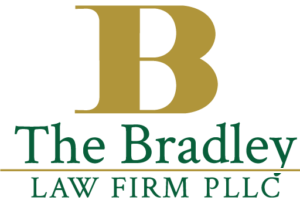Planning for Pension Eligibility
Am I eligible for the Aid & Attendance Pension?
Any wartime veteran with 90 days of active duty, 1 day beginning or ending during a period of war, is eligible to apply for the Aid & Attendance Improved Pension. A surviving spouse (marriage must have ended due to death of veteran) of a wartime veteran may also apply. The individual applying must qualify both medically and financially.
Schedule a Consultation Today
Click Below to View Frequently Asked Questions
What is Aid & Attendance?
There are three main steps in the application process: gathering the necessary documents, filling out the correct application form to submit to the VA with the necessary documents, and mailing all of the documents to the correct pension processing center.
Email Anthony Bradley at anthony@bradley-law.com to see if you qualify.
This is a difficult question to answer. Much depends on the VA regional office for your area. On average, 6 to 8 months seems to be the normal approval time at the moment. Some approvals come through in as little as 6 weeks, but these are the exception. We know of people still waiting for an approval 12 months from the date of filing.
Keep in mind that if the benefit is approved, it is applied retroactively to the date of application. Also, if the applicant is over 90 years old, include a letter requesting that the application be expedited. The VA is supposed to give priority to any application for benefits by a veteran age 90 or older.
What are the Aid and Attendance pension benefit amounts for 2017?
Is there a “look back” period when submitting the application?
Currently, there is no “look back” period, as with other government programs, such as Medicaid. The VA looks at the value of assets on hand at the time of Aid & Attendance application.
Discharge/separation Papers (DD-214. If you need to request military records, please visit
www.vetrecs.archives.gov to get a copy.
Copy of Marriage Certificate (for surviving spouse or when filing for both the veteran and spouse).
Copy of current Social Security award letter (Letter that SS sends at the beginning of the year stating what your monthly amount will be for the following year).
Net worth information, including bank accounts, CD’s, trust, stocks, bonds, annuities, etc.
Proof of all income from pensions, retirement, interest income from investments, annuities, etc.
Proof of insurance premiums, medications, medical bills or any other medical expenses that are not reimbursed by insurance or Medicare.
Physician statement that includes current diagnosis, medical status, prognosis, name and address, ability to care for self, ability to travel unattended, etc. If the applicant is in a nursing home or assisted living facility, you will need to submit a Nursing Home Status Form and a Statement of Occupancy from the facility (ask the facility for this Statement).
Banking information for direct deposit of monthly payments (include a voided check).
List of all doctors and hospitals visited in the last year.
Be sure to include VA form 21-0845 (Authorization to Disclose Personal Information to a Third Party) if you are filing for your loved one and need to oversee the application process. Without this authorization, the VA will not discuss the application with you.
Never send originals and ALWAYS send all correspondence via Certified Mail “Registered Return Receipt” as well as keeping a complete copy of everything for your own records. If you are in the process of completing an A&A claim, the VA states, “It is not necessary to request a duplicate copy of a veteran’s discharge or separation papers solely for the purpose of filing a claim for VA Benefits. If complete information about the veteran’s service is furnished on the application, the VA will obtain verification of service.” In spite of what the VA says, we recommend including a copy to avoid any imposed delay.
Here are complete instructions on How to Apply for the Aid and Attendance Benefit.
